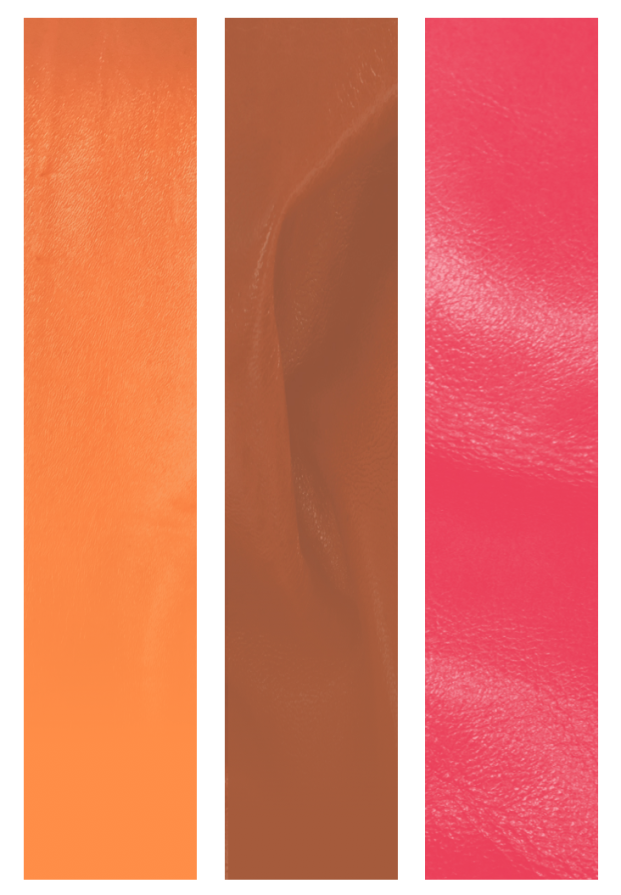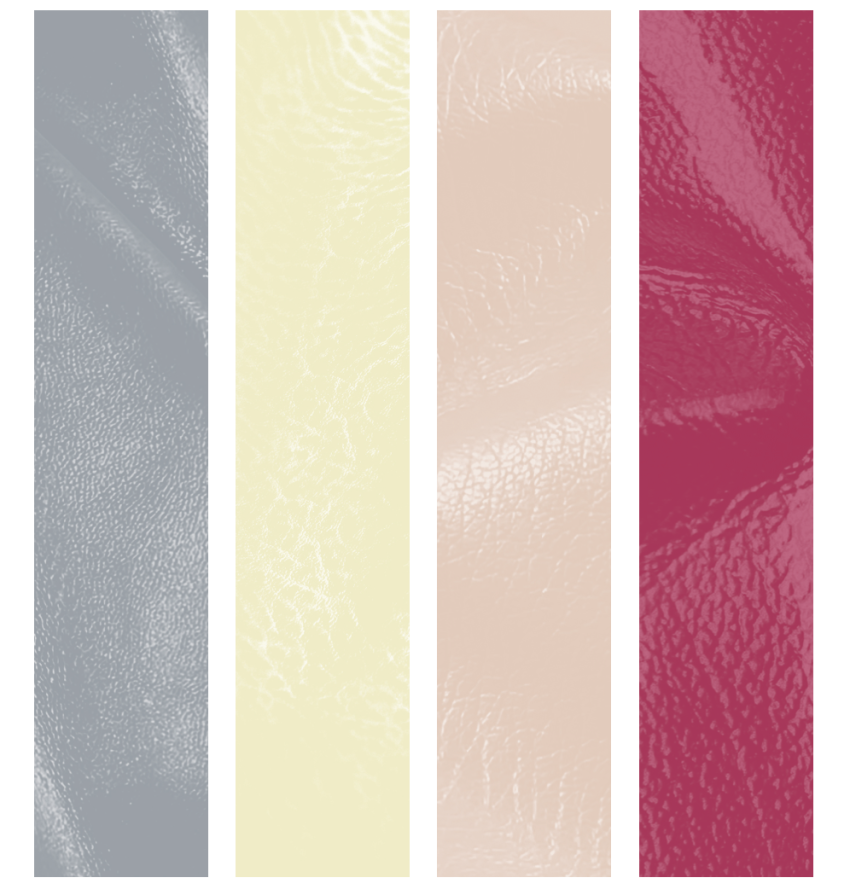SS 25: How to Color Leather ? The
The approach to color for leather is inextricably linked to the nature of the hide. Characteristics such as its appearance, the animal from which it comes and its grain type will influence the choice of color, and in turn the dyeing and finishing processes.

Prior to the coloring stage, the skin is inspected to determine its quality and assess whether to enhance its beauty or to conceal its flaws. The coloring technique, meanwhile, will vary according to the desired properties for future use, such as resistance to light and rubbing. There are two distinct processes.The first is drum-dyeing,
The first is drum-dyeing, where the leather is immersed in a dye bath in a drum. This is aniline leather – or dipped leather if full-grain lambskin. The dye penetrates the leather completely, thereby also coloring the edge. This dyeing method allows the finished hide to breathe and the color to develop a patina over time.
The second dyeing technique, known as a pigmented finish, involves covering the surface of the skin with a thin layer of pigment during finishing. The pigment, which has varying levels of opacity, is applied to the hide using a spray gun to even out the surface and reinforce the finished leather. This technique is also suitable for developing fantasy color finishes.
Sensory Color
The singularity of each hide is undoubtedly the first specificity that gives leather its luxurious character. Each hide tells a story. Leather is also a highly sensorial material, stimulating the senses through its visual and tactile characteristics, or its handle, the term used to describe the behavior of the hide. Its origins lend it an emotional and sensual dimension that’s reflected in the terminology used to define it: we speak of nourished leathers, the softness of a buttery touch, candle touch and unctuous leather. The classic leather shades – cognac, sand, tobacco, warm browns and a spectrum of orange and camel tones – perfectly suit nourished, opulent skins. These natural, pigmented colors highlight and bring out the material’s intrinsic qualities.

For the Spring-Summer 2025 season, these iconic colors are revisited, reflecting the general trend for increasingly sophisticated hues. Quintessential leather hues are intensified, with more complex, accentuated and slightly off shades such as an orange that borders on vivid, a Raw Sugar shade, perfect balance between brown and fawn, and a subtle red dynamized by a pinkish hue. The finishes energize these shades with glossy patinas and two-tone effects that offer new variations of high-gloss and burnishable treatments.
Cosmetics & Make-Up Filters
Alongside the revisited classics, leathers and skins reflect the key Spring-Summer 2025 fashion trends. New directions include pale colors with artificial accents blending influences from the digital and cosmetics universes.
The digital world is also pushing the shift toward an intangible, impalpable aesthetic. Light shades such as Titanium Gray, Milky Yellow and Pearl Skin are sheathed in shimmering glosses, lacquered aspects and ultra-glossy gels, just like their avatars, developed in 3D.

A growing interest in skin care, meanwhile, plays out in chromatic choices and finishes inspired by make-up, which, when transposed onto leathers, are an invitation to explore silicon-like cosmetic textures, iridescent shimmers and pearlescent highlighters. Iridescent finishes and opalescent reflections enhance pastel shades, but here, without masking the natural qualities of the skin, with preserved surfaces animated by natural grains, crumpled effects or reptile-like embossing. These light tones ‘make up’ the skin and combine with sensual classic burgundy-red shades, updated this season in a dark fuchsia incarnation. Brightened for summer using gel-coated finishes, this lipstick shade displays its opulence through ultra-glossy pigmentation.
Sustainably Natural
The growing appetite over the past few seasons for a more natural look has seen a shift away from pigmented finishes to more transparent aniline and semi-aniline colors used to preserve the skin’s grain. On a broader front, the sustainable movement has turned the spotlight on sustainable color and finishes, with the aim of reducing chemical impact at every stage of the production process. Combined with sustainable tanning methods, these dyes and finishes are part of a circular process optimizing the product’s life cycle and making the material potentially recyclable. Promoting a product’s longevity favors colors that will improve over time, prioritizing natural shades and finishes for surfaces that develop a patina. The colors take on delicate nuances, shine or bleached effects, without diminishing the value or quality of the product.
Vegetable tanning is particularly good in this approach to color, allowing us to rediscover natural shades and explore the natural dyeing power of plant extracts. The natural beige and brown shades of the SS25 range evoke new-gen basanes, with tones obtained from coffee, tea or grape extracts. The tanning properties of these extracts means that re-tanning and dyeing can be combined, eliminating a stage in the process.
Certain shades, such as N°25 Fermented Green, appear to come directly from living organisms, reflecting the mood for naturalness. Combined with sanded finishes, these tones are nuanced and whitened for a washed look that evolves over time.

Finally, the Turquoise Enzyme and Solar Yellow colors of Summer 25 combine naturalness and intensity, without the need for over-pigmentation. The season’s delicately irregular leathers – granite-effect nubucks, soft full-grain leathers in matte versions or with a fine luster on the surface of the grain – embrace their natural qualities and preserve their radiance. Vivid and stable, these colors can be obtained thanks to new-gen vegetable and metal-free tanning methods featuring tannins made from bio-sourced tanning agents and waste products from the agricultural industry.
Endless Variety
Placed between the material and the finish, a single color offers an endless variety of tones. A grainy texture, a polished surface, shine and patina are all ways to capture light, multiplying the range of chromatic nuances.
